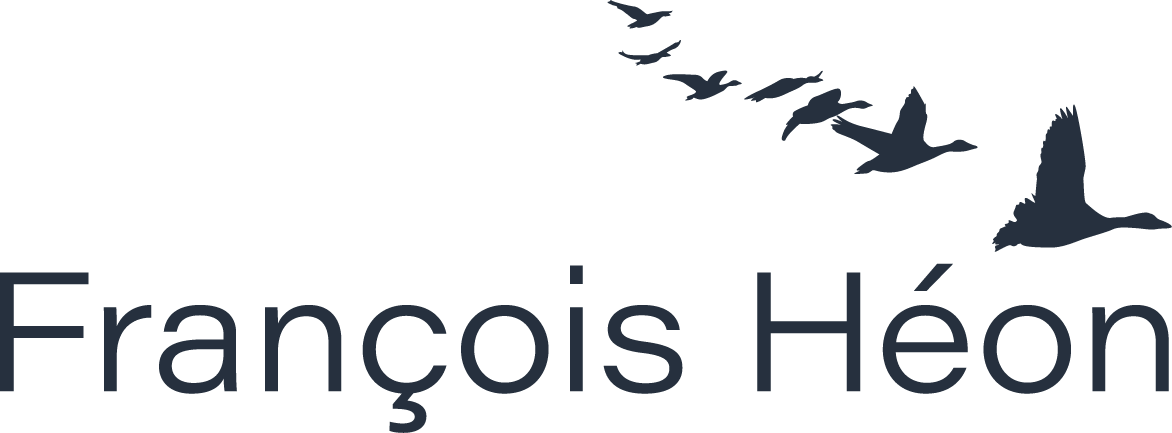Gratitude and recognition at work
Numerous company recognition programs exist to reward and to thank employees for the work they have accomplished. These programs are different ways to say, “Thank you!” and answer our basic human need to be recognized (Maslow, 1943).
Yet, beyond traditional reward and recognition programs, recognition is more and more sought and expected through spontaneous and authentic acknowledgements, expressions of a “culture of recognition,” a working environment where…
- one’s ideas and contributions are valued and encouraged, and
- where such attitudes and values are demonstrated and promoted by leadership.
Yin and Yang qualities in leadership
Leadership often has been associated with qualities of vision, action and determination. Today, more and more “yin-like” qualities, such as humility, listening and recognition, also complete our understanding of leadership (Boyatzis & McKee, 2005; Senge, 2004). Not only do we expect our leaders to have superior IQ, we also expect (and hope, for our own mental health) for the same with regard to their EQ, or Emotional Quotient. We value leadership that speaks and acts with clarity of intention on one hand, and listens and pays attention on the other. (Scharmer, 2007)
It is interesting to note that Jim Collin’s (2005) well known research on thriving and evolving Fortune 500 companies also identified two main leadership characteristics that guided these organizations to greatness: determination and humility. Their leaders’ ability to act with steadfast determination while having the humility to recognize and work well with others was key to their enduring success.
Competition and collaboration
The greatest challenge for organizations today is not competition but collaboration with both internal and external partners. The complexity and interdependency of today’s environment inevitably leads us to collaborate with different people from different departments or different fields in order to deliver together better products or services.
Dr. Yves Lamontagne, President of the Quebec Board of Physicians, explained in a recent interview, the importance of collaborative skills: “In the past, we trained our physicians to be ‘The best’ in their field. That’s OK, but what we really need today is not so much for people to be ‘The best’ but to be ‘better together.’ ”
Reality television fascinates us by showing us who will be the week’s “loser” or “eliminated member”; however, the greatest challenge facing leaders and teams today is to keep valuable people engaged and to maximize their synergy.
The power of recognition and the capacity to evoke the best in people
When asked to look back on their own experiences and to identify the most significant leader with whom they have had the chance to work, many managers answer in the following way:
- My model of leadership is a person who saw and recognized qualities in me which I was not even aware. He made me aware of them.
- This person is my inspiration as a leader because his openness and appreciation allowed me to realize myself in a way that I would have never been able to achieve otherwise. He gave me confidence.
- My best example of leadership is with my two business partners. They both trusted my skills and used them in many different ways. This allowed me to develop in my job way beyond the job-description.
People who recognize and appreciate the qualities we bring to work act as mirrors—and, even better, as catalysts—for our development. Being recognized makes us aware of our qualities and talents and gives us the confidence and ownership to develop them. Much more than being “nice,” recognition becomes a developmental act. “Human” resources are particular, in that the more you see and recognize the best in them, the more they develop.
Recognition and the Pygmalion Effect
A most eloquent example of the power of recognition has been demonstrated in hundreds of studies on the positive Pygmalion dynamic. In these experiments, teachers or army commanders, for example, were led to believe that some of their students or recruits had exceptionally high potential while others did not. The Pygmalion dynamic experiments showed over time that the correlation between teacher expectation and student achievement was higher than almost any predictive IQ or achievement measure. The correlations in numerous studies ranged from 0.5 all the way to an almost perfect 0.9 (Srivastva & Cooperrider, 1999).
These results, translated to leadership, tell us that a manager’s expectations of a staff member (i.e., his or her perceptions or appreciation of that person’s talents) is likely to have a higher correlation with the staff member’s performance than that which would be shown by other predictive testing, 360-degree inventories, and in-basket exercises administered for that candidate’s selection.
Recognition and NBA performance
An anecdote about Steve Nash, NBA MVP and “master recognizer,” illustrates a good example of how leadership is how you do things and how you see things. I am not a basketball connoisseur, but being Canadian, I can’t help but be proud of this Canadian professional basketball player and team leader. I once heard Nash in a television interview describe his role as a leader on the court. I discovered that the guard position he plays actually sets up the play strategy as the team goes for the basket.
Nash described, in the most candid manner, the way in which he tries to build on his teammates’ self-esteem. He would have one of his teammates perform a certain move since it was that teammate’s best move. Next, he would set up another play that would take advantage of another teammate’s talent. He would seek to build on each one’s strengths and show that the best way to appreciate someone’s talent is to call upon it.
Recognition gives meaning
When others recognize our personal strengths, they often are speaking of our unique talents. It can be insightful, when reflecting on our career orientation for example, to ask colleagues and close friends what they see as our distinctive qualities and talents. Recognition in these circumstances becomes more than just a sign of appreciation; it becomes a door to greater self-knowledge, self-expression and meaning. Why not turn your next “evaluation” meeting into an “evolution” meeting? Highlight the strongest qualities and achievements of people and see how those particular aspects give meaning and direction to their own leadership.
Gratitude: A life-affirming attitude that creates abundance
It remains surprising that organizations and societies that yearn for abundance still underestimate the abundance generated by positive and affirming discourses.
Try it: You can end your next project by asking everyone what they are most grateful about. Then, see how this will guide you for the next project. Take notes!
Being thankful is a positive attitude that generates more enthusiasm and creativity than negative attitudes, such as criticism and judgments.
Try it: In an upcoming meeting, focus on building on each other’s ideas, rather than on pitting ideas against one another. Multiplying intelligences is much more fruitful and fun.
And giving thanks to what you did not expect… nor want…
Franco Dragone, a Belgian artistic director who has led projects with Cirque du Soleil and Celine Dion in Las Vegas, offers this life lesson on being thankful and creative. He always reminds himself that “any unexpected turn of events can always be source of new possibility.” While delays in deliverables, missed airline connections or failed contacts can be frustrating, Dragone argues that remaining open to work with these unexpected events often yields unexpected solutions.
Selected references
Boyatzis, R & McKee, A. (2005). Resonant Leadership. Renewing Yourself and Connecting with Others Through Mindfulness, Hope, and Compassion. Cambridge, MA. Harvard Business Press.
Collins, J. (2001) Good to Great. New York: Harper Business.
Emmons, R. (2007) Thanks! How the new science of gratitude can make you happier. Houghton Mifflin, New York
Senge, P (2004). Presence: Human purpose and the field of the future. CITY: Society for Organizational Learning
Scharmer, O. C. (2007) Theory U: Leading the future as it emerges. CITY. Society for Organizational Learning. • Srivastva, S. & Cooperrider, D. L. (Eds.) (1999).
Appreciative Management and Leadership: The Power of Positive Thoughts and Action in Organizations. Euclid OH: Williams Custom Publishing.
To explore Appreciative Management further go to: The Appreciative Inquiry Commons: http://ai.case.edu.
Translated and adapted from a French article published in the Canadian Magazine Vivre, Nov. 2009, with the generous assistance of Lisa Nelson.


